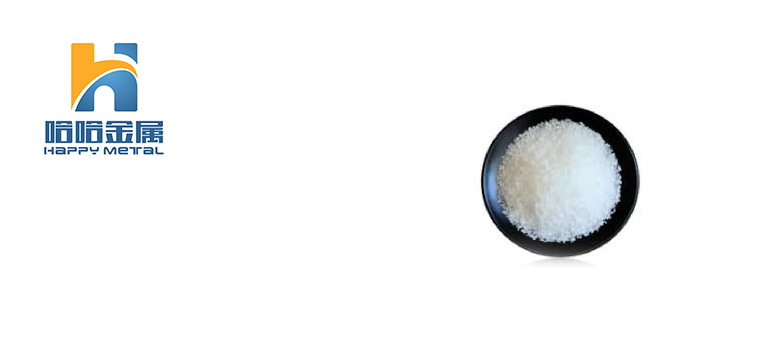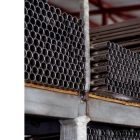
In modern agriculture, how to maximize the yield and quality of crops has always been a focus of concern for farmers and horticultural enthusiasts. In this process, the rational use of fertilizers is crucial. Today, we are going to introduce a secret weapon known as mono ammonium phosphate, which optimizes plant growth.
Mono ammonium phosphate is an efficient and multifunctional fertilizer that contains abundant phosphorus and nitrogen elements, which play an important role in plant growth and development. Phosphorus is essential for plant growth, as it participates in regulating energy metabolism, promoting root development, and improving the quality of flowers and fruits. Nitrogen, on the other hand, is the fundamental component in plants, which participates in the synthesis of proteins and chlorophyll, promoting plant growth, increasing leaf area, and photosynthetic efficiency.
One of the advantages of Mono ammonium Phosphate is its high solubility. This allows it to quickly dissolve in irrigation water and be quickly absorbed and utilized by plant roots. This rapid absorption helps to provide the nutrients needed by plants, accelerating their growth and development processes. In addition, it can also be applied by foliar spray to provide direct nutrient supply and enhance plant resistance.
Of course, when using mono ammonium phosphate, we need to pay attention to the appropriate fertilization dosage. Excessive fertilization not only causes waste, but may also have negative impacts on the environment, such as soil and water pollution. Therefore, understanding the nutrient requirements of target crops and the nutrient status of soil is very important. Through soil testing and professional consultation, we can determine appropriate fertilization plans to avoid waste and maximize plant growth.
In addition, Mono ammonium Phosphate is not only used in the agricultural field, but also widely used as a flame inhibitor. When subjected to high temperatures, it will release ammonia gas, diluting the oxygen around the flame, thereby suppressing the spread of the fire.
As a multifunctional fertilizer, Monoammonium Phosphate is widely used in agriculture. It is suitable for various crops, including grains, vegetables, fruits, lawns, etc. By providing two key nutrients, phosphorus and nitrogen, it can improve crop growth and development, increase yield and quality.
Different crops have different requirements for phosphorus demand. Some crops, such as corn and soybeans, have a high demand for phosphorus because they require a large amount of phosphorus in the early stages of growth to promote root development. Some fruit trees and vegetable crops require more phosphorus during flowering and fruiting to support flower bud formation and fruit development. The high solubility of mono ammonium phosphate allows phosphorus to be quickly absorbed by crops, meeting their phosphorus needs at different growth stages.
In addition, nitrogen plays an important role in plant growth. It is involved in the synthesis of key molecules such as amino acids, proteins, and chlorophyll, and has a direct impact on the growth rate and nutrient utilization efficiency of plants. The nitrogen element in mono ammonium phosphate exists in the form of ammonia, which is easy for plants to absorb and utilize. It can promote plant leaf growth, increase leaf area and photosynthetic efficiency, thereby improving nutrient absorption and energy conversion.
In addition to phosphorus and nitrogen elements, mono ammonium phosphate can also provide small amounts of ammonium nitrogen to crops. Ammonium nitrogen has a slow-release effect, which can prolong the supply time of nutrients and reduce nutrient loss and waste. This is very beneficial for long-term crops, as it can maintain a healthy growth state of plants and reduce the frequent application of fertilizers.
When using mono ammonium photosphate, farmers and horticultural enthusiasts should determine the appropriate fertilization dosage and frequency based on the specific crop needs and soil nutrient conditions. Regular soil testing to understand the content of phosphorus and nitrogen in the soil can help adjust fertilization plans, ensure balanced nutrient supply, and avoid excessive or insufficient nutrients.
Overall, mono ammonium phosphate is an excellent fertilizer choice that can optimize all aspects of plant growth. By providing phosphorus and nitrogen elements, it promotes root development, increases leaf surface activity and photosynthetic efficiency, enhances plant nutrient absorption capacity and growth rate. It also has a high solubility and slow-release effect of ammonium nitrogen, allowing nutrients to be quickly absorbed and continuously supplied by plants, improving fertilization efficiency and fertilizer utilization efficiency.
Using mono ammonium phosphate as fertilizer can also bring other advantages. Firstly, it has a low salt index and will not have a negative impact on soil salinization. Secondly, it is a dust-free fertilizer that does not cause flying dust problems, making the fertilization process cleaner and more convenient. In addition, Mono ammonium Phosphate also has good chemical stability and can maintain effectiveness under different soil pH values, with a wide range of applications.
However, it is worth noting that although mono ammonium phosphate is an efficient fertilizer, excessive application may still cause nutrient waste and environmental pollution. Excess phosphorus and nitrogen will be washed into soil and water body, causing Eutrophication of water body and adverse impact on ecosystem. Therefore, farmers and horticultural enthusiasts should follow the principles of scientific fertilization when using Mono ammonium Photosphate, and apply fertilizer reasonably according to crop needs and soil conditions.
In summary, mono ammonium phosphate is a multifunctional fertilizer with abundant phosphorus and nitrogen elements, which can optimize plant growth and development. Its high solubility, slow release effect of ammonium nitrogen, and other advantages make it an important fertilizer choice in agricultural production. However, reasonable use and avoidance of excessive fertilization are key to ensuring effective nutrient utilization and environmental protection. Through scientific fertilization management, we can maximize the role of mono ammonium phosphate, improve crop yield and quality, and achieve sustainable agricultural development.




